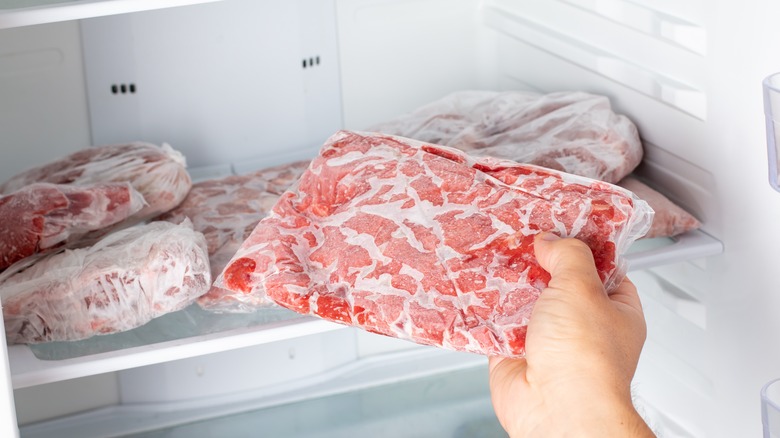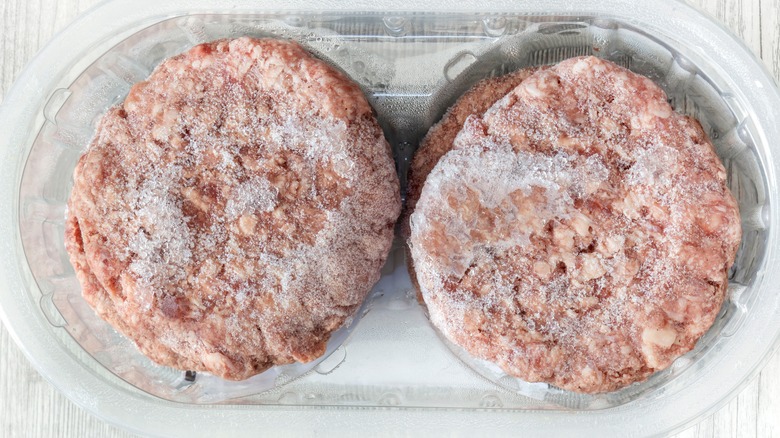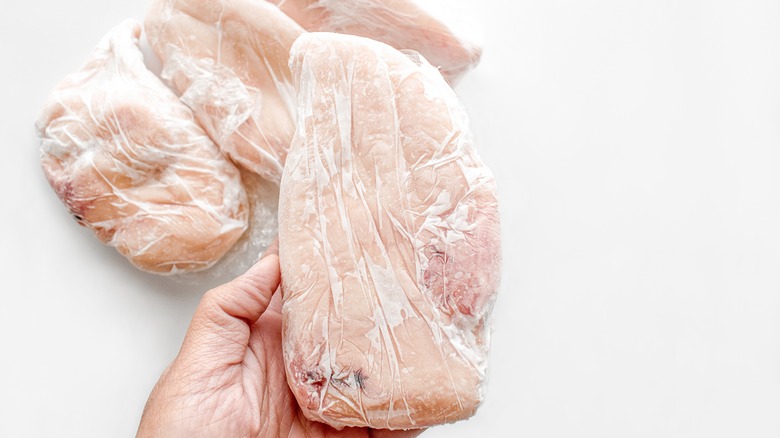What'll Happen If You Eat 2-Year-Old Frozen Meat?
Sometimes you're doing a deep dive into the freezer to clean out the old and make room for the new, and you come across some beautiful New York strip steaks that you totally forgot about. The date on the bag says they've been stored for about two years, and they cost a pretty penny, so what might happen if you go ahead and eat them? Likely nothing.
The United States Department of Agriculture (USDA) lists a whole range of dates for frozen meats, including two to three months for cooked meats, three to four months for uncooked ground meat, and four to 12 months for uncooked roasts, steaks, and chops. For poultry, it's four months for cooked items, three to four months for uncooked giblets, 9 months for uncooked parts, and 12 months for uncooked whole pieces. However, the agency is quick to note that these ranges are "for quality only."
Freezers stop the spoiling process in its tracks entirely—the USDA guidelines refer to the quality of the meat once thawed. Speaking of thawing, the safest method is putting your meat in the refrigerator overnight. However, if you need dinner on the table the same day, you can microwave your meat on the defrost setting or place the package in a bowl of cold water.
Drawbacks of eating 2-year-old frozen meat
There are a few drawbacks to eating two-year-frozen meat, though, and the main one is that it won't be quite as good as anything that was eaten within the USDA's timeline. You might notice freezer burn, which is recognizable as crystals — they literally look like frost — on the surface of your food. Freezer burnt meat is safe to eat, and you can always cut off the affected part during or after thawing or even after cooking. Of course, this means losing a potentially pricey protein. You might also find that your two-year-frozen meat is too freezer-burnt to eat at all, which is a total loss.
Freezer burn can also degrade taste and texture, as the freezer removes moisture from the items contained within. So your meat might be blander than it would be if used by the prescribed quality timeline, or it might be tougher and chewier once cooked. Unfortunately, these side effects cannot be reversed, so you're taking a chance when you eat two-year-frozen products.
Storing meat for a deep freeze
While some people keep things in their freezer for decades, most of us max out at a few years, and there are some steps you can take to help maintain your meat's quality for as long as possible. The types that come on a styrofoam tray (with that soggy "diaper" at the bottom) should actually be removed from their original packaging, wrapped with plastic wrap, and placed in a freezer bag, with as much air pushed out as possible. And don't forget to write the date onto the package for future reference.
If you're freezing cooked meats, wait for them to cool for a few hours before packaging them up — on the counter in ice or in the refrigerator. Appliance manufacturer Whirlpool recommends bringing the meat to 70 degrees F within two hours or 41 degrees F by the four-hour mark. You'll want to do this because hot or warm food in the freezer can actually cause the temperature to rise on the foods they're near, which can lead to freezer burn.
Finally, a basement or garage freezer is actually the best place to store meat. The compartment in your kitchen is likely opened with far more frequency, which can cause temperature fluctuations. A freezer that isn't opened nearly as often will keep the meat at a more consistent temp.


